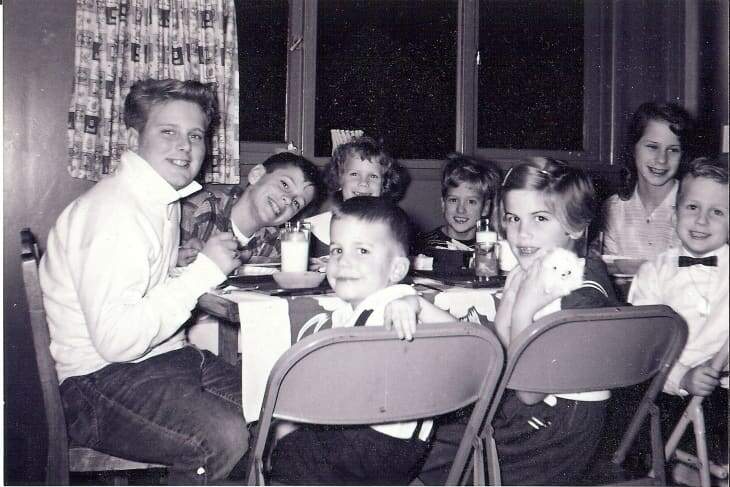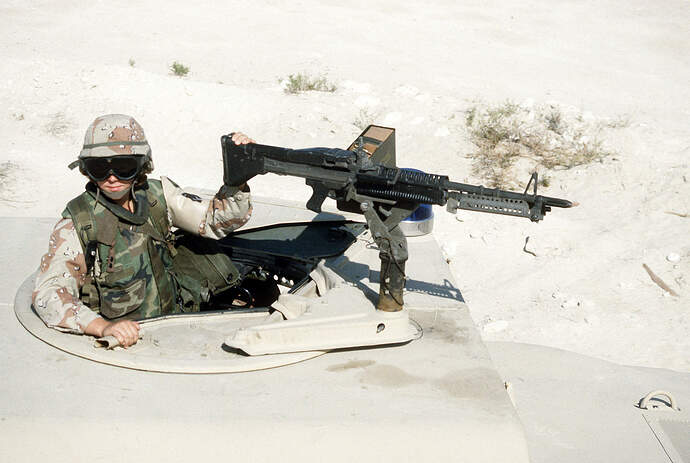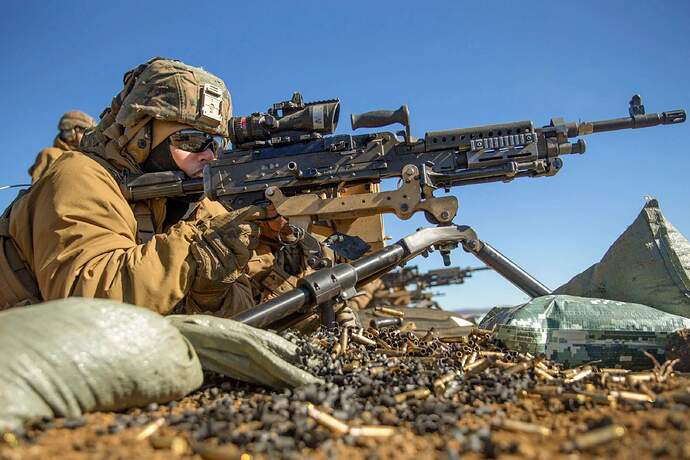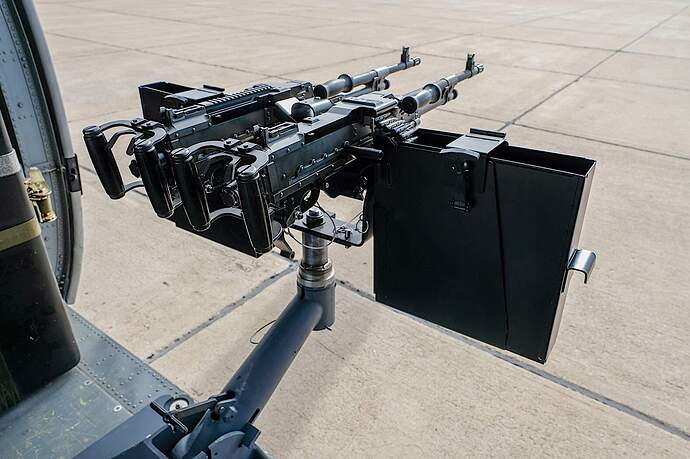Gino to the rescue as usual.
Our own
@18bravo yep, as I hit the reply button I said to the wife, this is getting moved for sure.
All good, I am in the corner with my manager sitting on the stool gathering myself.

Wrestling: Sweaty men in very small clothes groping each other …
hmmmmm …
It has nothing to do with your post or any other. I separated this out since it is a great discussion with lots of good info that was already getting lost in the Ukraine thread.
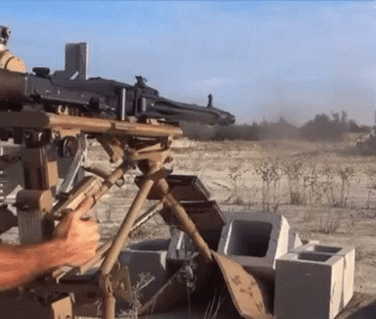
When you are talking accuracy, what are you comparing? Machine gun to a rifle? Machine gun to machine gun? A machine gun has the potential to be accurate. Tripod or vehicle mounted with a couple of rounds, quite accurate. Bipod firing 10 to 20 round bursts, not as accurate.
What’s a copy? A copy is a dang close copy of an original. A refinement is a design improvement on a preexisting model. The debate is on how much change does it take to become an improvement. Changing the stipple pattern on a handgrip is not enough of a change to call it a different model. Redesigning a bolt that reduces stoppages is enough improvement for a new model number.
I seem to recall the British Army initially found the Bren Gun TOO accurate and had it modified to spread the lead around a bit more?
Regards,
M
Same for the A-10’s GAU-8/A Avenger. It was initially considered too precise. Had to be modified to get better dispersion. And the Belgian Minimi - same thing - a very precise MG. There are a few others I have long forgotten but the Warthog’s gun has always been one I’ve remembered.
The M60 was an oddball. Some guys could shoot it well, and others just sprayed and prayed. Lots of things to not like and lots of things to like. Very mobile like the MG42. Prone to cook offs when you been shooting too fast. Loading ramp and feeding tray needed a complete redesign. Sights were barely good enough. Didn’t really balance all that well when shooting off hand, but you also learned to deal with that issue alone. Gun was kinda noisy, and the worst offender was in the bi-pod area. Barrel still was a pain to change out, and needed cooling fins real bad. Flash suppressor had issues that needed a complete redesign. Stock has no adjustment for fit, and not everybody fits it. Needed about five to seven pounds taken out of it. So you sorta learn on the fly what these issues are and then learn how to over come them on the fly. I could shoot very well off hand while most were just spraying. I wired the bi-pod up and shot off the bottom of the gun. Others didn’t. As good as the 7.62 round was it was over kill. Something shorter and in maybe 7mm would have been just as good. You rarely shoot over 350 meters, and most times at 125 meters or even less.
Now looking at the guy shooting at the clouds, and it makes you laugh at the way he’s wasting ammo! Yes I know that if your ambushed the point man and the machine gun just fling a ton of rounds out in that general direction to make the other guy put his head down. But after the first thirty rounds he knows where your at, so the idea is to limit your self to a couple ten round bursts and then move to a new spot. Standing up and shooting the machine gun with a long belt is just stupid. A thirty or even a forty round belt will save your day. After the first belt the sights are useless!
Mirage from the heat waves make it near impossible to know where your aiming. I often shot by instinct (aiming) covering a circular area starting at the seven o clock position and working my way up to the one o clock position. A four foot circle is all that’s needed for the golden handshake.
The M60 is a pain in the butt to clean, but with the help from my Mom; I got pretty good at it. I could strip and completely do the job in less than a half hour. If I shot it more than ten rounds, I knew I had to clean it. Just can’t get out of that issue. Always shot to the left two or three inches with a new barrel or a fresh cleaned barrel. I always shot a five shot burst before using it. Then things were where I aimed. The fore end made your wrist lock up (off hand shooting) so it didn’t swing very well. Thus you always started on the lower left of your target, and let nature take it’s course. You can’t win fighting with it. I shot a belt thru a G3 once, and never noticed these issues all that much. I liked the fit of the stock much better, but it also was slower to shoulder. The Russian RPD was better all the way around (modified).
gary
Infantry crew-served Weapon, coaxial Weapon, anti-aircraft Weapon, flexible helicopter defense weapon.
Take the M60 and the M240.
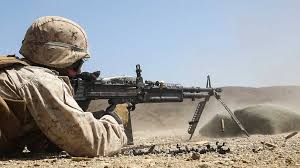

That is absolutely true and was perhaps one of its drawbacks. There are stories of gunners putting rounds through the same hole at over 250 yards but I don’t know if thats true or not.
But, was the Bren actually a true GPMG? I know it was used in different roles, but i’m not sure if it fits into the category.
When I joined the Army, we were still using the LMG, which was to all intents and purposes, a Bren, rechambered for the NATO 7.62mm round. It was pretty accurate still.
With the FN belt fed GPMG, you would be lucky to hit a Figure 11 at 600m, perhaps 1 round in 10, and that’s if you knew what you were doing. Never mind that the bullets were lethal out to 1500m - Its most effective range in the light role (taught) was around 300m, where it had a good combination of accuracy and area supressive ability.
But that wasn’t a big issue because, as we were taught, as part of British Military Doctrine, its most effective use was as a Section support weapon both in the direct and indirect fire role and in the final stages of an assault, in the Final Supressive Fire role. In fact, the ‘beaten zone’ suppressed by multiple GPMGs is phenomenal. The Bren (and LMG) were limited in this role, due to their magazine fed supply.
The only actual evidence I could find relating to the GPMGs actual design concept was that it originated with the MG 34, designed in 1934 by Heinrich Vollmer of Mauser on the commission of Nazi Germany to circumvent the restrictions on machine guns imposed by the Treaty of Versailles. That being that It was introduced into the Wehrmacht as an entirely new concept in automatic firepower, dubbed the Einheitsmaschinengewehr , meaning “universal machine gun”.
Its raison d’etre then, was to provide versatility. How it was employed and where it was most effective, varied and so I can accept that opinions differ.
In other words, accuracy is only partly important. Accuracy is, in fact a product of the design and is desireable. However, providing you can concentrate your fire into a relatively small area at longer ranges during fire support operations, its doing what it was designed to do - provide fire support, and accuracy isn’t ‘solely’ important.
In fact, I couldn’t find a single piece of evidence that stated specifically that the GPMG was designed for accuracy per ce, conversely, theres a load of evidence that specifically states that it was designed to provide fire support in a number of roles.
More or less any weapon will be (relatively) accurate at short ranges. Only very specialised weapons are designed to be highly accurate at long ranges, this being the prime consideration of the designer, with such weapons generally not having ‘General Purpose’ as part of their designation.
Another example is the misconception of the role of the hand grenade. It is easy to assume it was designed to kill. But it wasn’t. The hand grenade was designed to, and I quote from the British Army’s own manual, “wound, stun or drive out the enemy from a position”.
Its funny you know, because the videos of soldiers fielding GPMGs out in Afghanistan where they’re simply getting as many bullets into the general area of the enemy as they possibly can, are legion. This would suggest that accuracy wasn’t a primary concern… until of course, it was.
The US soldiers firing those MG3s are MPs from the 18th MP Bde. out of Vilsec.
If I am not mistaken, I read where the required accuracy of a rifle in WW2 was 4 MOA. It just needed to work. Today 2 MOA rifles or better are the norm. Some sub 1 MOA are getting affordable today.
The Machine gun barrel is the heart of accuracy. By todays design and production standard it will be accurate. To what MOA, I don’t know. I know that tolerances are important to accuracy. When everything is newish, the tolerances are tighter and the accuracy is better. However tighter tolerances lend to more reliability issues in different environments. So a little slop is not bad.
Machine guns are capable of being as accurate as the barrel and tolerances allow if mounted rigidly so vibration will not effect where the weapon is pointed. However this is not a normally desired aspect with a machine gun. Seldom will it need to put 20 rounds into the same hole. Spreading the rounds out into a cone of fire at some range is accomplished by having a small amount of play in the weapon mount. The M240 and the M85 and the M60 we mounted in tanks has a small amount of play when the weapon was mounted. That would provide for some round disbursement. When the barrel had enough rounds through it, it would also become less accurate. Mounting the weapon on a swivel post or a bipod allows the vibrations from the recoil to disperse the rounds due to the weapon not being rigidly mounted.
Even on a boipod, the 240B is pretty damned stable. Let’s not forgot what it evolved from.
The first time I ever competed I came in third place. First and second place were the guys from range control at Camp Williams. They set the rules, which we didn’t know beforehand, other than the fact an NBC shoot was in the cards.
When their teams fired, (the same gun, btw) their tripod was staked into the ground with tent pegs and supported with sandbags. For their NBC fire they wore Air Force pro masks which was a huge advantage for them. We did very well but not when it came to wearing an M40. And we didn’t have the foresight to bring tent pegs. What self repecting SF guy sleeps in a tent in any temperature above 20 degrees F?
Still, I was pleased with third as it was our first go at it.
I don’t know if there were complaints or what exactly transpired, but for the next competition there was no NBC shoot, and you could not stake down the tripod because…
After the first belt was expended, you had to displace the gun, run up a hill, grab another belt, and then run down and set back up. All timed of course.
My teammate and I (my team sergeant) had just gotten back from Iraq and were in supremely good shape. I also had quite a bit of experience with the 240, the 249, and of course the fi’tty.
I don’t know if you’ve seen guys who work at range control lately. At any rate we smoked them.
On occasion I would accidentally cack off three rounds instead of the desired two. (only two holes per target counted.) It was hard to score our target because there would be two and sometimes three holes in virtually the same spot. you could barely see a clover pattern on the ones with three shots. Fortunately the judges were pretty astute, and knew I was shooting two round groups and sometimes three. As there were no errant holes in our target they correctly surmised those rounds were going where intended.
At any rate, if you lean your corn fed, 225 pound azz behind the gun until the tripod is about to bend, that is one very stable platform. More so than vehicle mounts because the front and rear are stabilized. On a GMV swing mount for instance there’s a lot more opportunity for the muzzle to deflect when firing.
By the way, it has been ages since I went to the Q course, where I fired every imaginable MG produced since about 1930, but I believe the requirements were based at that time not on the MOA the barrel was capable of, but rather how many rounds fell within certain parameters, measured in mils if I’m not mistaken. Not that it was essential knowledge to us, but they liked to put out information like that for our own edification.
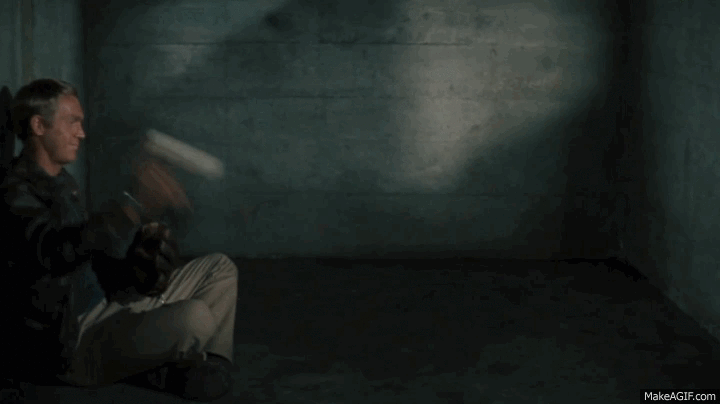

Just make sure that you don’t throw both of your balls at the wall …
![]()
I only had issues with the “copy” statement.
I think that Germany wanted the MG 42 to be the perfection of a weapon designed based on the insights made in WW Iwhere they used the MG 13
" Even before World War I, the German military was already looking forward to replacing the heavy machine guns which proved to be such a success in that war"
Enter the MG 34 (based on the Rheimetall MG 30)
BUT
" However, the MG 34 did have fundamental drawbacks, such as sensitivity to extreme weather conditions, dirt and mud, and comparatively complex and expensive production. Attempts to incrementally improve the basic MG 34 design failed.[8][9] During the period between 1934 and the adoption of the final MG 34 production version the Waffenamt (German Army Weapons Agency) realized the MG 34 Einheitsmaschinengewehr was too complex and expensive to mass-produce and started looking for ways to simplify and rationalize the technical concept."
which eventually led to the MG 42 by way of this:
" In order to address these issues, a draft specification was made and a contest was held for an MG 34 replacement. Three companies were asked in February 1937 to submit designs: Metall und Lackierwarenfabrik Johannes Großfuß AG of Döbeln, Rheinmetall-Borsig AG of Sömmerda, and Stübgen AG of Erfurt.[10] The design and mock-up gun proposals were submitted in October 1937.[11] Großfuß AG’s entry proved to be the best design by far, employing a unique recoil-operated roller locking mechanism whereas the two competing entries used a gas-actuated system.[10] The Großfuß company had no earlier experience in weapons manufacture, specializing in pressed and stamped steel components (the company’s staple product was sheet metal lanterns). Dr.-Ing. Werner Gruner, one of the leading design engineers with Großfuß, knew nothing about machine guns when he was given the task of being involved with the project, although he specialized in the technology of mass production."
The MG 34 and older models were still being used in WW II since there wasn’t eneough Mg 42’s.
" The MG 34 was used as the primary infantry machine gun, and remained as the primary armored vehicle defensive weapon as it took limited space to change barrels inside a vehicle. The MG 34 was intended to replace the MG 13 and other older machine guns, but these were still being used in World War II as demand was never met.[18] It was intended to be replaced in infantry service by the MG 42, but there were never enough MG 42s, and MG 34s continued to be used in all roles until the end of World War II.[19]
It was the standard machine gun of the Kriegsmarine (German Navy)[20] and was also used as a secondary weapon on most German tanks and other armoured vehicles used during World War II.[19]"
Doctrine for the usage of the MG 34:
The German tactical infantry doctrine of the era based a (10-man Gruppe) squad’s firepower on the general-purpose machine gun in the light machine gun role.[24] The advantage of the general purpose machine gun concept was that it added greatly to the overall volume of fire that could be put out by a squad-sized unit.[25][26] It was possible for operating crews to lay down a non-stop barrage of fire, pausing only when the barrel had to be replaced. This allowed the MG 34 to tie up significantly larger numbers of enemy troops than was otherwise possible. The Americans and the British trained their troops to take cover from the fire of an MG 34, and assault the position during the small time window of barrel replacement.[27]
I find it extremely difficult to point out a single turning point where history was changed.
Linear warfare became obsolete when guns started getting accurate and lethal at greater ranges.
Massed charges went out with the machine gun (Maxims and other heavy and cumbersome weapons)
Trench warfare protected against MG fire but had lots of other costs, mortars and accurate artillery made it dangerous and the tank definitely made trench warfare obsolete. Russia is trying it but drones make it very costly. Tanks changed everything but then the anti-armour weapons improved.
Suggest any single pivot point that changed history and there will be ten others equally important.
Making categorical statements is fraught with danger. Finding solid ground to make a last stand on in history is difficult.
Did the MG 42 influence warfare? Yep, sure it did. Machine guns before the MG 42 also influenced warfare. Which MG was THE most influential? I’ll never be willing to make a definitive statement on that. Maybe a PhD work in military history could sort out the details but I have other things to do.
The British Army, and others, knew what machine guns could do before WW I but they didn’t draw the full consequences of this knowledge.
Somewhere I saw a short film about MG vs advancing troops.
The British advanced in ‘line ahead’ formation and were moved down by the MG in front of them.
Hmm, time to think. AHA!!
Advance in ‘line abreast’ instead. Scheisse said the Kaisers MG-gunners.
Nachdenken Jawohl! Moven ze guns to the side of ze position.
Brits advance in ‘line abreast’ and get moved down from the side instead.
Thinking time for the British.
Advance in a spread out formation, scattered in depth and width.
Scheisse, ve vill need more ov ze machine guns.
Tactics/doctrine spins in a circle with weapons development. The circle has been spinning since some ape picked up a rock or stick and will keep spinning until something really really bad happens.
Pick any point on that circle and I will pick another one, if you pick a new point I might steal your previous one.

